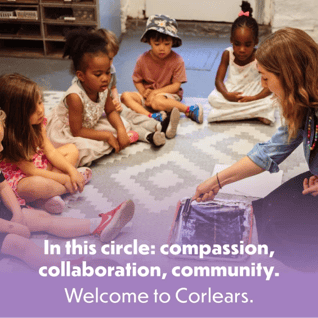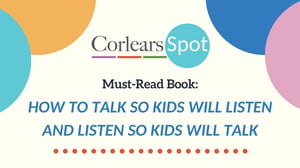Each year, I like to give all of the families in the early childhood classrooms a book. It is not only a gesture of welcoming to our community, but also an invitation to explore and consider new perspectives, approaches, theories, and techniques in caring for and raising young children. This year, I gave all of the families in the 2s and 3/4s (our nursery and preschool levels), How to Talk So Kids Will Listen & Listen So Kids Will Talk by Adele Faber and Elaine Mazlish.
Even though this book was first published about 30 years ago, it still rings true on so many levels. It’s a must read -- and a must have -- for all parents with children of any age.
“Even though this book was first published about 30 years ago, it still rings true on so many levels. It’s a must read — and a must have — for all parents with children of any age. ”
From my perspective, the main takeaway of the book is that children are really just small people. Their brains and bodies are growing and developing, and need time, practice, and good modeling in order to make it through the sometimes painful and difficult journey of childhood. As adults, we sometimes take this process for granted, because, well, we have already arrived! However, as parents, our best prospect for helping our kids reach their social-emotional potential is to remember to see them as human, and not just little kids.
Some of the key points we appreciate from the book are:
Kids have REAL feelings
Even though they may not always be logical, or even match the situation at hand, children’s feelings come fast and hard, and are every bit as real as any adult’s. Part of the natural development of children is to not only experience a wide range of feelings, but to also feel them deeply and whole-heartedly. Emotions drive behavior, and denying a child’s feelings can sometimes make the problem (and behaviors) bigger. Empathy is key in these moments.
Acknowledging their feelings and helping them to name them and modeling a way to feel the feelings they have in productive ways helps children feel validated and valued. SHOW them how to work through the feelings and problems, and positively reinforce them when they do. Maybe try, “I know that was really frustrating for you, and that must have been hard. Let’s think for a minute about how to feel better / fix this problem, and help you move on.”
Punishment doesn’t solve the problem
Right in line with acknowledging kids’ feelings is developing your own understanding that punishment doesn’t actually make your child behave better, or help them learn to be better problem solvers. In the end, punishment often creates more frustration, and a sense of failure. Sometimes kids make poor choices, and we can help them learn to make better choices by partnering with them after mistakes have been made to model how to make new choices.
What adults often forget with young children is that they are already so distraught by the outcomes of their poor choices that punishments are really like rubbing it in their faces. Instead, support your child in trying to see why the choice was unhelpful, or not the best one -- not as a way to point out their flaws, but rather as a way to develop good judgement and sound reasoning skills. Maybe try, “I can see that you spilled a lot of paint because your body wasn’t steady. Let’s get something and I’ll show you how to clean it up. Once it is cleaned up, you can try again.”
Encourage your children to be themselves, not what other people expect them to be
“Cultivating a sense of self, and self-worth, is not a small thing. Kids need to struggle sometimes in order to learn how to tolerate frustration, manage disappointment, and truly appreciate their own hard work. ”
One of the reasons Corlears kids are so successful after they leave Corlears is because they have a deep sense of autonomy and confidence. This doesn’t come from years of empty flattery and generic praise. It comes from understanding that all people, even young children, need to understand their own value from the inside out. Cultivating a sense of self, and self-worth, is not a small thing. Kids need to struggle sometimes in order to learn how to tolerate frustration, manage disappointment, and truly appreciate their own hard work.
In this effort, we can support children by asking them why they chose a certain research topic, and to explain their thinking, defend their position, and challenge assumptions. Helping children find their inner voice and be proud of it is essential. It also helps children learn to appreciate others’ perspectives.
This is barely a scratch on the surface of the gems this book has to offer! It really is chock-full of practical and sound advice for developing strong and productive communication with your child. Whether you read it front to back from the first go, or you take it in chapter by chapter, you will find something here that will work. I highly encourage you to pick up this read and get started!







